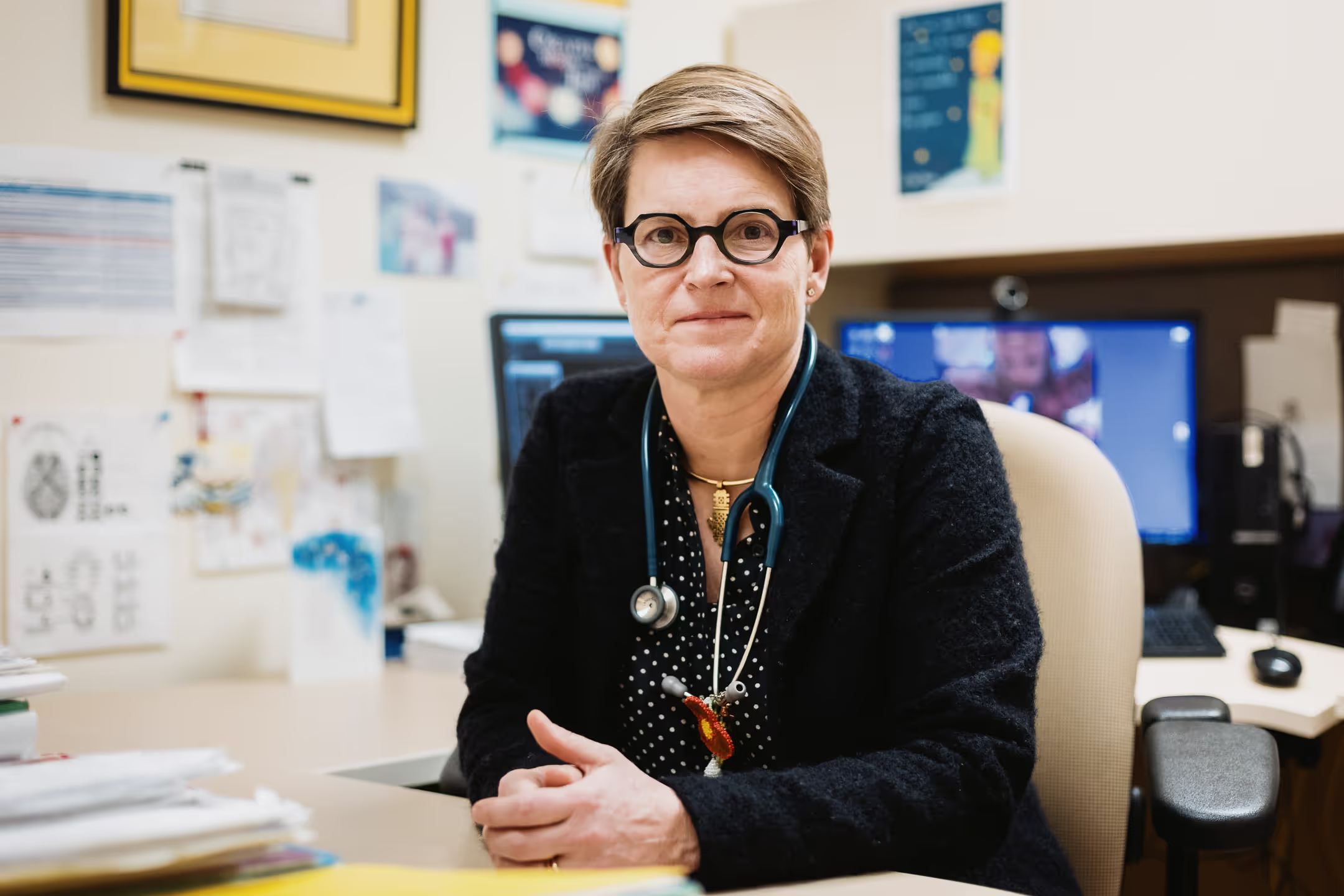.avif)
Dr. Dalia Rotstein is an Assistant Professor of Medicine at the University of Toronto and a staff neurologist at St. Michael’s Hospital, part of Unity Health Toronto.
What is NMOSD and how does it typically present?
NMOSD is a rare inflammatory autoimmune disease of the central nervous system. It’s estimated to affect about 1 to 3 in 100,000 Canadians and disproportionately affects women as well as Canadians of African Caribbean and Asian descent. It’s also known as neuromyelitis optica (NMO) and in the past it was called Devic’s disease.
NMOSD can have a devastating impact on patients’ lives. It usually presents with an attack on the spinal cord or optic nerve, which is the nerve providing visual information from the eye to the brain. If the attack is on the spinal cord, the affected person can present with weakness, sensory loss, or bladder and bowel symptoms. If the attack is on the optic nerve, the person usually presents with vision loss or blurry vision.
There are also other, less frequent types of attacks, such as area postrema syndrome (or APS), a rare neurological presentation of NMOSD in which a person can present with nausea, vomiting multiple times a day, and sometimes hiccups. Symptoms of an NMOSD attack build up over days to weeks, but it can take months to recover. The attacks are often severe, with incomplete recovery, sometimes leaving people with permanent neurologic disability, such as blindness or needing a wheelchair. People with NMOSD are often very strong and resilient as they learn to manage daily life with neurologic disability.
How is NMOSD similar to multiple sclerosis (MS)? How do the two conditions differ?
NMOSD and MS are both inflammatory diseases of the central nervous system that affect the white matter (the central nervous system, including the brain and spinal cord, is made up of a combination of white matter and grey matter). White matter serves to conduct nerve signals to other regions of the brain, spinal cord, and body. When the white matter of the central nervous system is damaged, it can affect a person’s ability to move, use their sensory faculties, or react appropriately to external stimuli.
Both NMOSD and MS often start in people aged 20 to 50, although NMOSD can start at any stage of life. Both are associated with attacks, but in NMOSD the attacks are often more severe and patients experience less recovery. NMOSD can be diagnosed via a blood test for a specific antibody, whereas for MS, there’s no specific blood test – diagnosis is based on clinical findings and MRI testing.
.avif)
Why is it important to receive a prompt diagnosis following symptom onset?
Prompt recognition and treatment of an NMOSD attack are so essential. Receiving steroids and, in some cases, plasma exchange quickly after an attack’s onset is associated with lower rates of permanent severe disability. If a person with NMOSD experiences any new neurologic symptoms that last for more than a few hours, it’s important that they contact their neurologist or go to the ER.
Long-term therapy is also very important for NMOSD patients, to prevent future attacks. We’re fortunate that we now have highly effective therapies for NMOSD, but patients cannot be treated appropriately without a correct diagnosis. Sending a patient’s blood test for the NMO antibody, also known as the aquaporin-4 antibody, is the key step toward securing a diagnosis.
How is NMOSD treated? What role should patients play in their care?
We have a number of therapies that are prescribed long-term to help prevent new NMOSD attacks. They all work through the immune system to suppress inflammation. We have some established therapies that are used off-label, and prednisone, an oral corticosteroid, is sometimes combined with these therapies as well. We also have a number of monoclonal antibody therapies to treat NMOSD, which were recently shown in clinical trials to be highly effective in reducing or preventing relapse. Unfortunately, however, access to these new therapies is still quite limited in Canada.
I always encourage NMOSD patients to take an active role in their care once diagnosed. This can include adopting healthy lifestyle habits, caring for one’s own mental health, discussing treatment options with one’s neurologist at their checkups, and seeking the support of local patient communities like MS Canada or The Sumaira Foundation.
Why is it a hopeful time for Canada’s NMOSD community?
I’ve seen firsthand how the lives of people with NMOSD have been transformed over the last 5 to 10 years with the introduction of newer therapies. Many of my NMOSD patients today have good vision and are fully ambulatory, meaning that they don’t require use of a wheelchair. In Ontario, we used to only have access to a couple of medications to help prevent attacks and people often had breakthrough attacks every few years.
Today, we have better access to a broader array of therapies including stronger and more effective therapies, and we can achieve complete attack prevention for many people after their first attack and diagnosis. We also have medications with novel mechanisms of action that we can turn to if a patient does have an attack on their first therapy. However, we don’t have as ready access to all of the newer medications as exists in countries like the United States, Germany, Italy, and Japan as funding for some of the newer medications is still under review by regulatory bodies.
My hope is that we will be able to access the right medications, at the right time in a person’s journey, in the not-so-distant future. I would like to see complete remission of this disease in all of our patients in the future and I think that goal is within reach.
{{CTA}}
This initiative was supported by AlexionAstraZeneca Rare Disease.
Those diagnosed with NMOSD are encouraged to consult with their neurologist to find the right treatment plan for them.
%20(1).jpg)






